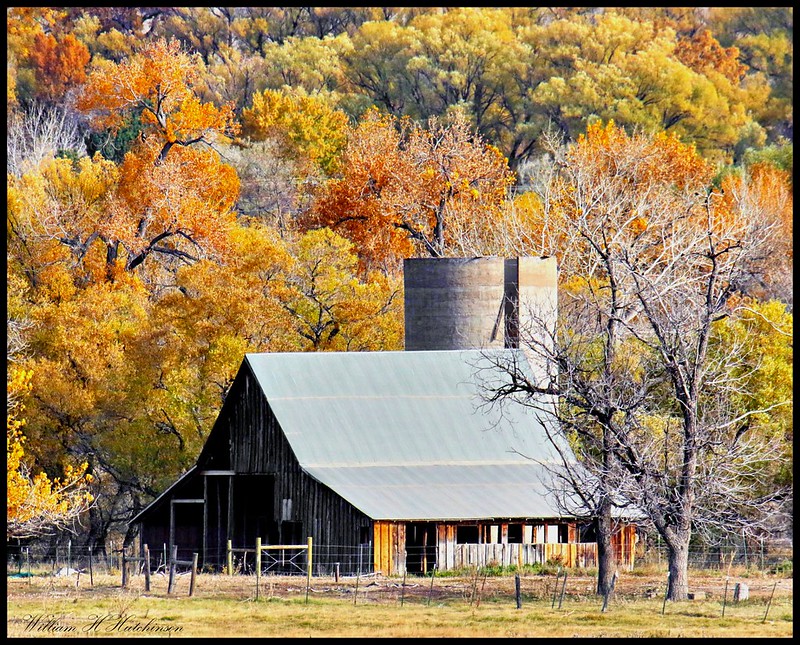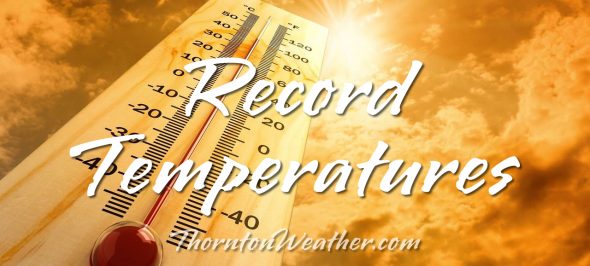
Our look back at this week in Denver weather history is dominated with two types of events: snow and wind. November is our second snowiest month and we see many significant snowfall events in the past. Wind is a fact of life on the plains and in Denver and damaging events have occurred with relatively frequency as we can see below.
From the National Weather Service:
5-6
In 1938…heavy snowfall totaled 7.5 inches over downtown Denver. North winds were sustained to 16 mph with gusts to 19 mph on the 5th.
5-7
In 1918…rain was mixed with and changed to snow…which became heavy and totaled 8.1 inches in downtown Denver. North winds were sustained to 21 mph with gusts to 23 mph.
6
In 1962…west winds gusted to 55 mph…briefly reducing the visibility to 1 1/2 miles in blowing dust at Stapleton Airport. The strong winds blew all day.
In 1989…high winds to 62 mph were recorded in Boulder. Northwest winds gusted to 33 mph at Stapleton International Airport.
In 1991…strong westerly Chinook winds blew into metro Denver with gusts to 88 mph recorded at Rollinsville and to 51 mph in Boulder. Later…northeast winds with gusts of 30 to 40 mph were common across all of metro Denver behind a cold front…which produced only 0.2 inch of snowfall at Stapleton International Airport.
7
In 1958…a strong cold front produced northeast wind gusts to 52 mph at Stapleton Airport where some blowing dust was observed.
In 1980…Chinook winds at sustained speeds of 40 mph were recorded with a peak gust to 71 mph measured at Wondervu southwest of Boulder. West winds gusted to 25 mph at Stapleton International Airport.
In 1989…strong winds buffeted many foothills areas. Wind gusts of 60 to 70 mph were recorded in Boulder and Longmont. Northwest winds gusted to 43 mph at Stapleton International Airport.
In 1996…wind gusts to 75 mph were recorded at Golden Gate Canyon and at the Rocky Flats Environmental Test Facility northwest of Denver. Northwest winds gusted to 40 mph at Denver International Airport.
In 1998…upslope conditions…coupled with a moist and unstable air mass…allowed heavy snow to develop in the foothills west of Denver. Snowfall generally ranged from 4 to 6 inches…but 7 inches were measured 4 miles south of Evergreen. Only 1.2 inches of snow fell at the site of the former Stapleton International Airport. This was the first measurable snow of the season.
7-8
In 1969…wind gusts to 48 mph in downtown Boulder caused minor damage.
8
In 1896…southwest Chinook winds sustained to 42 mph with gusts as high as 46 mph warmed the temperature to a high of 53 degrees.
In 1977 near-blizzard conditions in blowing snow caused the closure of I-70 to the west of Denver in clear creek canyon and east of Denver to Limon. Northeast wind gusts to 46 mph were recorded at Stapleton International Airport where snowfall totaled only 1.1 inches.
In 1984…a rare November thunderstorm produced west winds gusting to 31 mph…but only 0.04 inch of rain at Stapleton International Airport.
In 1996…high winds gusting from 80 to 100 mph were recorded at Wondervu in the foothills southwest of Boulder. West northwest winds gusted to 32 mph at Denver International Airport.
In 2006…the temperature in Denver climbed to a high of 80 degrees. This was the first time the temperature had ever exceeded the 70’s in November since records began in 1872. This new all-time record maximum temperature for the month of November was also a new daily record and the highest temperature ever recorded so late in the season.
In 2020…a peak wind gust to 63 mph was observed at Centennial Airport from the southwest. At Denver International Airport…a peak gust to 53 mph was observed.
8-9
In 1897…west winds were sustained to 45 mph with gusts as high as 50 mph in the city.
In 1919…post-frontal heavy snowfall totaled 8.4 inches over downtown Denver. Most of the snow…6.6 inches…fell on the 9th. North winds were sustained to 26 mph with gusts to 30 mph on the 8th.
In 1950…a major winter storm dumped 10.4 inches of snow at Stapleton Airport with the most snow…7.8 inches…falling on the 8th. East winds gusted to 31 mph at Stapleton Airport on the 8th. Snowfall totaled 8.2 inches in downtown Denver.
In 1958…strong winds caused some damage in Boulder. West- northwest winds gusted to 40 mph at Stapleton Airport on the 8th.
In 1975…heavy snowfall hit metro Denver. Snowfall at Stapleton International Airport totaled 8.0 inches and east winds gusted to 21 mph. Power outages caused by the storm affected over 10 thousand people in metro Denver.
In the foothills west of Denver…10 to 15 inches of snow fell. The storm produced the greatest 24-hour precipitation…1.29 inches…ever recorded during the month of November in the city.
In 1983…metro Denver received 4 to 8 inches of snow with the heaviest amounts near the foothills. It was the first measurable snow of the season in Denver. Only 1.8 inches of snow fell at Stapleton International Airport where north winds gusted to 20 mph.
In 1989…strong winds hit the Front Range. On the 9th…the wooden frame of a house under construction in Boulder was blown down. The previous evening a power outage blackened Nederland. Wind gusts to 95 mph were recorded 4 miles south of Rollinsville with 97 mph on Fritz Peak near that town. At Stapleton International Airport…northwest winds gusted to 45 mph on the 8th and to 38 mph on the 9th.
In 1998…another upslope snow event developed in the Front Range foothills. The heaviest snowfall occurred in west central Jefferson County where 14 inches were measured 8 miles west of Conifer. Other snowfall totals included: 10 inches at Evergreen and 9 miles northwest of Bergen Park; 9 inches at Genesee…Nederland…and near the Chief Hosa exit on I-70; and 8 inches in Coal Creek Canyon. On the 9th…snowfall was 2.6 inches at the site of the former Stapleton International Airport. North-northeast winds gusted to 30 mph at Denver International Airport on the 9th.
8-10
In 1985…Indian summer came to an abrupt end when a winter storm dumped 10 to 18 inches of snow in the Front Range foothills and 6 to 10 inches across metro Denver…snarling traffic and causing flight delays of up to 3 hours at Stapleton International Airport. The temperature plunged from a high of 66 degrees on the 8th to a low of only 13 degrees on the 9th…after the passage of a vigorous cold front with northeast winds gusting to 32 mph. The temperature climbed to only 19 degrees on the 10th…setting a record low maximum for the date. Snowfall totaled 7.3 inches at Stapleton International Airport with most of the snow…7.1 inches…falling on the 9th.
9
In 1939…a trace of snow fell over downtown Denver. This snow…along with a trace of snow on the 2nd…was the only snow of the month…ranking it…along with other months…the second least snowiest November on record. Precipitation of 0.01 inch was the only precipitation of the month…making this the second driest November on record.
In 1944…the first killing frost of the season occurred in the city when the low temperature dipped to 35 degrees. This is the latest date for a killing frost ever recorded in Denver.
In 1946…heavy snowfall totaled 7.7 inches over downtown Denver. This was the second heavy snowfall in less than a week. Northwest winds were sustained to 26 mph.
In 1995…strong downslope winds gusted between 50 and 57 mph at Erie and Boulder. West wind gusts to 44 mph were recorded at Denver International Airport.
In 2014…a record high min of 45 degrees… broke the previous record of 43 degrees set in 1934…and preceded several days of record cold temperatures from the 11th through the 13th.
10
In 1897…west Chinook winds sustained to 51 mph with gusts to 60 mph warmed the temperature to a high of 64 degrees.
In 1915…southwest winds were sustained to 41 mph with gusts as high as 44 mph.
In 1955…strong winds raked the eastern foothills. A wind gust to 80 mph was recorded atop Rocky Flats south of Boulder where some damage occurred.
In 1995…snowfall totaled 6 to 9 inches in the foothills west of Denver…while only 2.2 inches of snow fell at the site of the former Stapleton International Airport. North-northeast winds gusted to 31 mph at Denver International Airport.
In 1998…strong Bora winds gusting from 70 to 92 mph coupled with blowing snow created whiteout and slick black ice conditions at the base of the foothills west of Denver. State Highway 93 between Golden and Boulder and c-470… Near the Morrison interchange were closed for several hours due to multiple car accidents. Dozens of motorists were stranded until weather conditions improved. A small motor home was a total loss when it caught fire after being blown on its side by strong crosswinds. A man was injured when he was blown off a vehicle while attempting to rescue the occupants. Wind gusts included: 92 mph atop Blue Mountain near Coal Creek Canyon…83 mph atop Fritz Peak near Rollinsville…and 77 mph at Jefferson County Airport near Broomfield. West winds gusted to 36 mph at Denver International Airport.
In 2000…freezing drizzle was widespread across northeastern Colorado with the heaviest amounts near the foothills in the evening. The freezing drizzle made many highways icy and slick…which contributed to a number of traffic accidents. Some highways across metro Denver were closed at times…including portions of State Highway 119 between Boulder and Longmont and U.S. 36 between Westminster and Boulder. State Highway 93 between Boulder and Golden atop Rocky Flats became nearly impassable due to a coating of ice by late evening.
10-11
In 1911…a strong cold front produced snow and a cold wave. The temperature dropped 68 degrees from a high of 66 degrees at 12:40 pm on the 10th to a low of 2 degrees below zero at 7:15 am on the 11th. The low temperature of 23 degrees at midnight on the 10th was also the high temperature on the 11th. Northeast winds were sustained to 42 mph with gusts to 51 mph. Snowfall was only 2.5 inches.
In 1982…up to 4 inches of snow fell over the higher terrain between Denver and Colorado springs. Winds gusted to 50 mph along the foothills. Rainfall totaled 0.27 inch with only 0.1 inch of snow on the 11th at Stapleton International Airport where north winds gusted to 39 mph. Dense fog with visibilities as low as zero persisted all day on the 10th. Continue reading November 6 to November 12: This Week in Denver Weather History →




